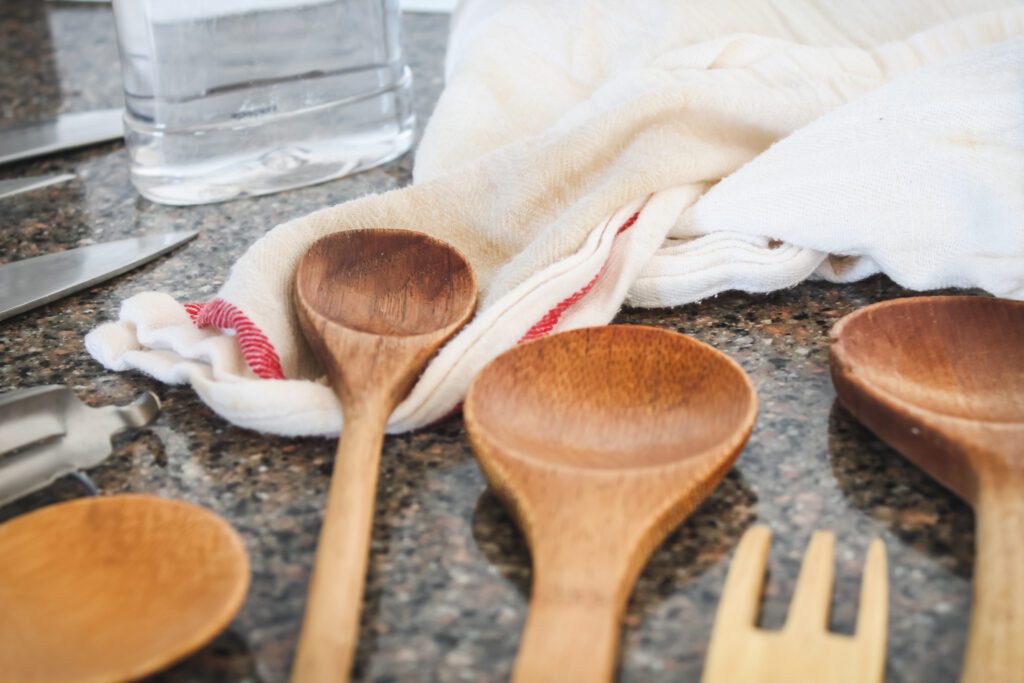Homemade vanilla
Welcome to my happy place of DIY, homemade, homegrown, handmade, nourished & crafted, whole hearted living. Finding magic in the mundane & growing some roots in the process.
Spring Cleaning: Wooden Spoon Care
April 21, 2021
This post may contain affiliate links. If you click on a link and purchase an item, I will receive a small commission. For more info, please see my disclosure on my Connect page.
I’ve been bitten by the spring cleaning bug lately. Maybe it’s because my suburban and my son’s car both broke down so I’ve been stranded at home? Or maybe it’s a year of quarantine that has me annoyed at everything in my house? Who knows but one thing is certain, I’m in a bit of a cleaning/dejunking frenzy. It all started with a shelf of flower vases and spiraled from there. One thing led to another and suddenly every wooden spoon, cutting board, knife, and utensil I own was pulled out and getting a once over.
I feel like I should warn you… I’ve got a lot of wooden spoons.
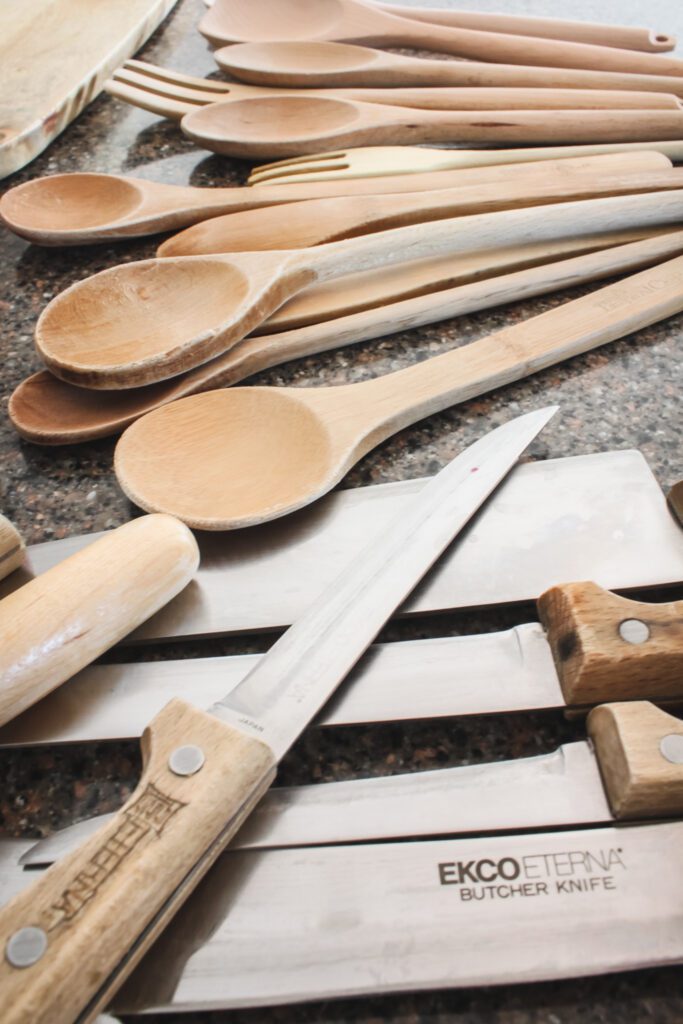
I big puffy heart love my wooden spoons.
Maybe it’s because I grew up laying wood floors, but wood is definitely my favorite. They don’t scratch my pans, don’t get hot while cooking, and they feel great in my hand. I use them for everything. I don’t know how I can love them so much and still forget to actually care for them but, I’m totally guilty of neglect. Please tell me I’m not the only one?
The crazy thing is caring for wood spoons and utensils is incredibly simple.
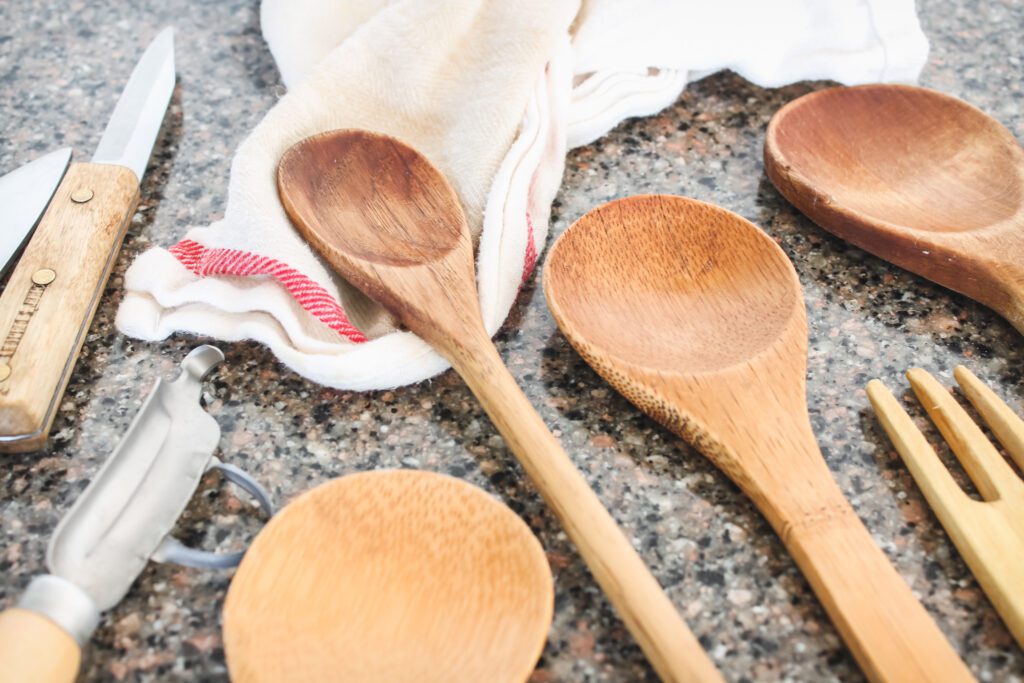
Wooden Spoon Care
Hand Wash: This might put some knickers in a twist, but it must be said. Don’t put wooden spoons in the dishwasher. Just don’t. Never ever. Heat + water + wood = death. For reals. Wash them by hand with a little soap and water instead and they’ll last years longer. Years. Also, don’t leave wooden spoons to soak in the sink for long periods of time. Wood and water don’t make good friends which bites, but it is what it is.
Hand Dry: Yeah, yeah. Again with the water. Sorry peeps. Remove excess water with a hand towel so the spoon doesn’t soak up too much water and warp.
Sand: Every so often your spoon might develop some rough spots or snags. You can use a little sand paper to smooth things out. This goes for wooden cutting boards too. When my wood cutting board gets ugly, I pull out my palm sander and smooth it down. A few passes and it looks like new!
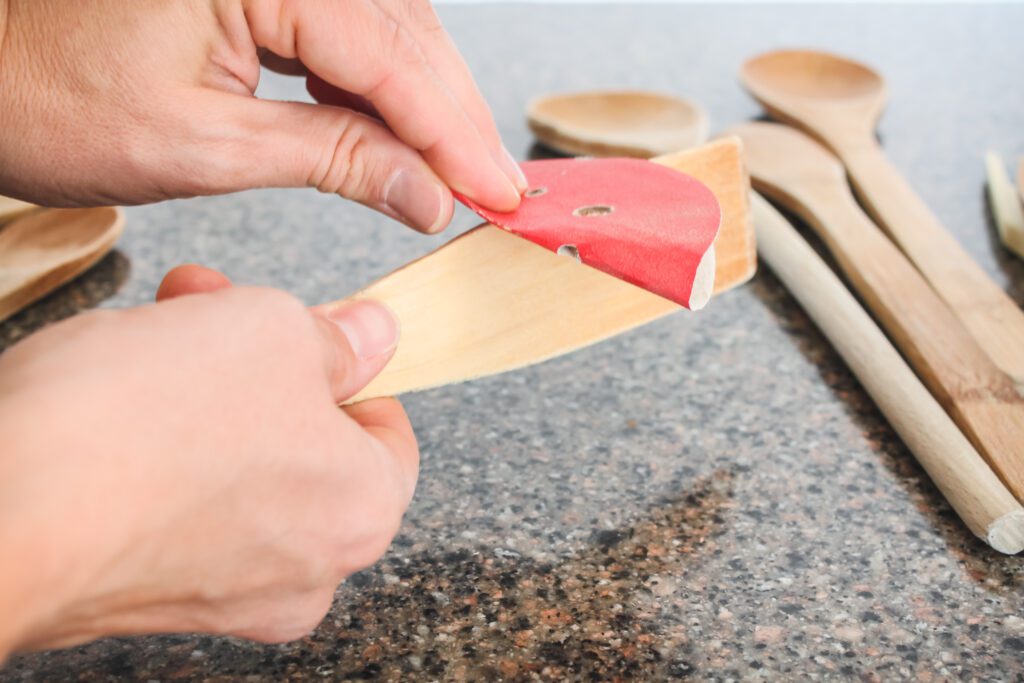
Oil or Wax: Ever wonder why your grandma’s wooden spoons were so beautiful and felt so good in your hand? She most likely oiled or waxed. Rubbing down wooden utensils and cutting boards with food-safe oil or wax balances moisture and increases longevity. It sounds kind of weird but wood sort of “breathes”. It expands and contracts depending on temperature and moisture. A well-oiled spoon becomes seasoned, sort of like a good cast iron skillet. Basically, the oil penetrates the fibers which seals the wood, providing protection. At the same time, the oil also creates a smooth buttery feel. This protective layer helps the wood resist water absorption, minimizing the likelihood that the spoon will crack.
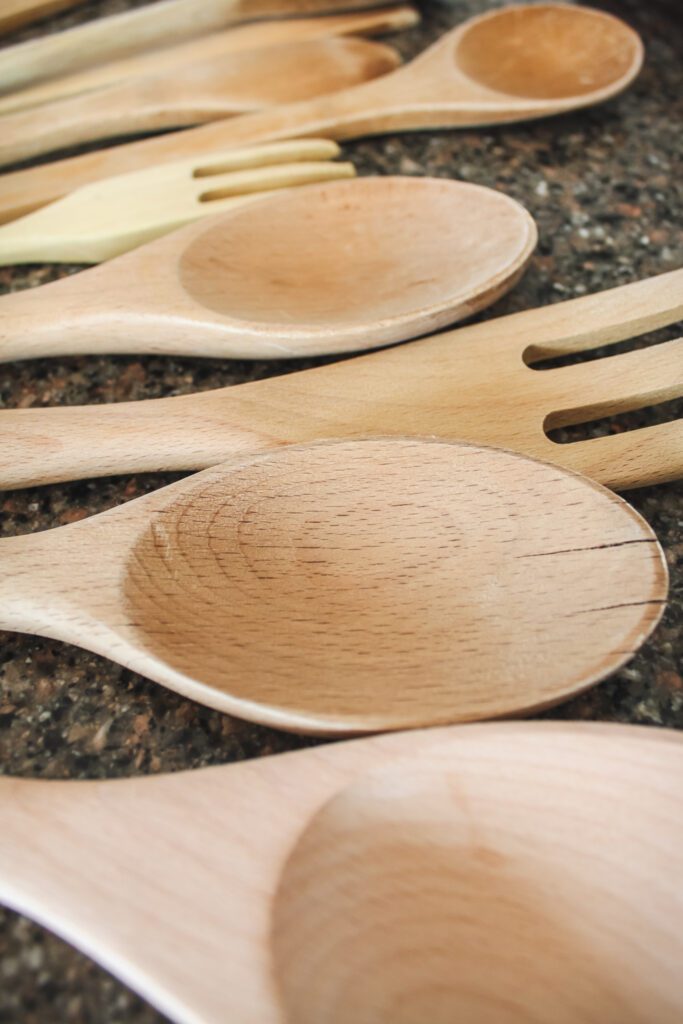
See that cracked spoon?
Sad face.
How to Oil a Wooden Spoon
When I oil my spoons, knives, and cutting boards, I pour some oil directly on the spoon or surface then wipe it all over with a rag. This is called flooding the wood. I use my rag to make sure the entire spoon is covered and then I let it soak in for about 15-30 minutes. After it has sat for a while, I come back with my rag and buff the wood. Once it’s buffed in, let it dry overnight. I usually do 2-3 coats, depending on how dry the wood is. Don’t overthink it, yall. Just rub on some oil.
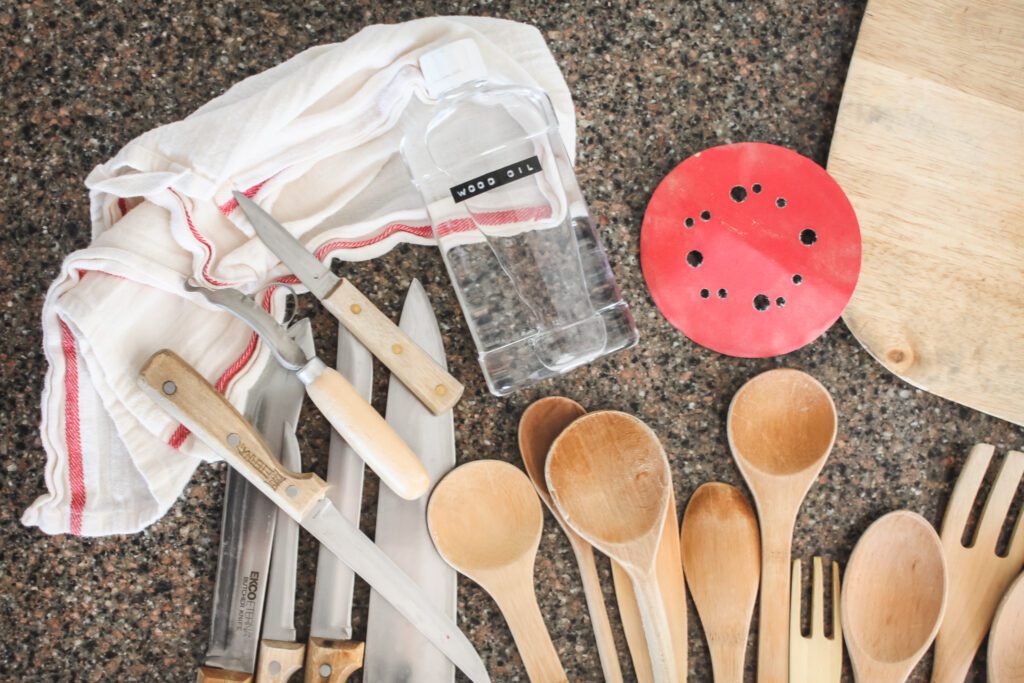
I’ve also used a wood butter/wax before and the concept is similar. Use the rag to put a little wax on the spoon then rub it all over. Let it soak in for a bit then buff clean.
Allow to dry overnight before using.
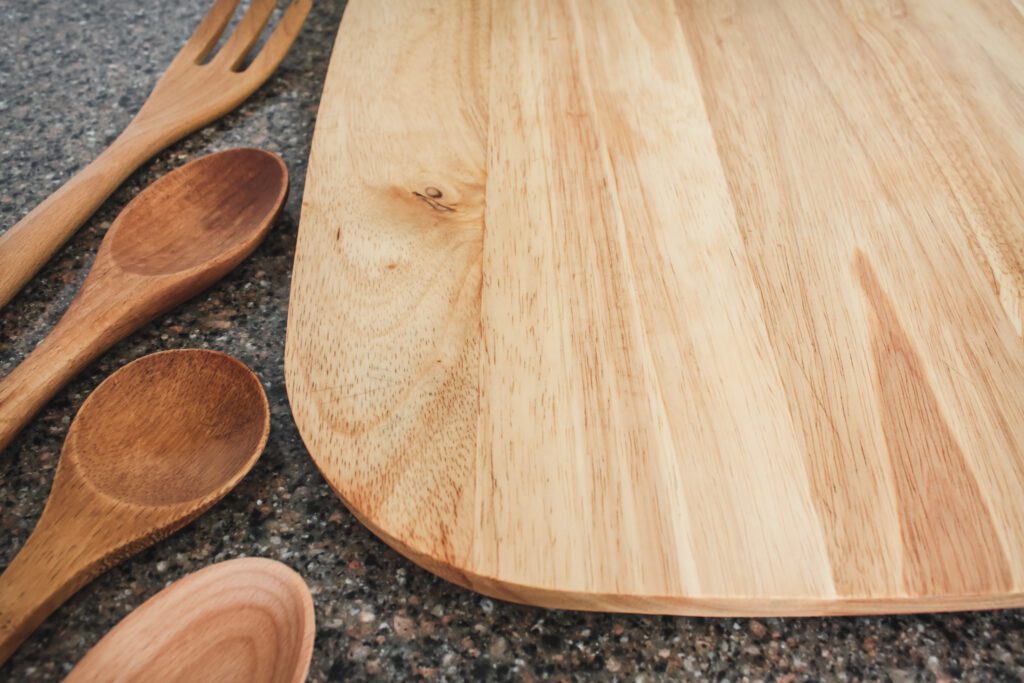
Look how much happier these spoons and cutting board look after a good drink of oil! So crazy, right?
What Oil is Best?
I’ve tried several oils over the years and keep going back to food-grade mineral oil because it’s easy to use and lasts a long time. I’ve tried one from IKEA, Howard’s, and THIS ONE from General Finishes and they all worked just fine. I haven’t found an end-all beat-all oil yet, maybe someday. You can also use walnut oil, beeswax, linseed oil, and fractionated coconut oil. Whatever oil you decide to use, make sure it is food grade.
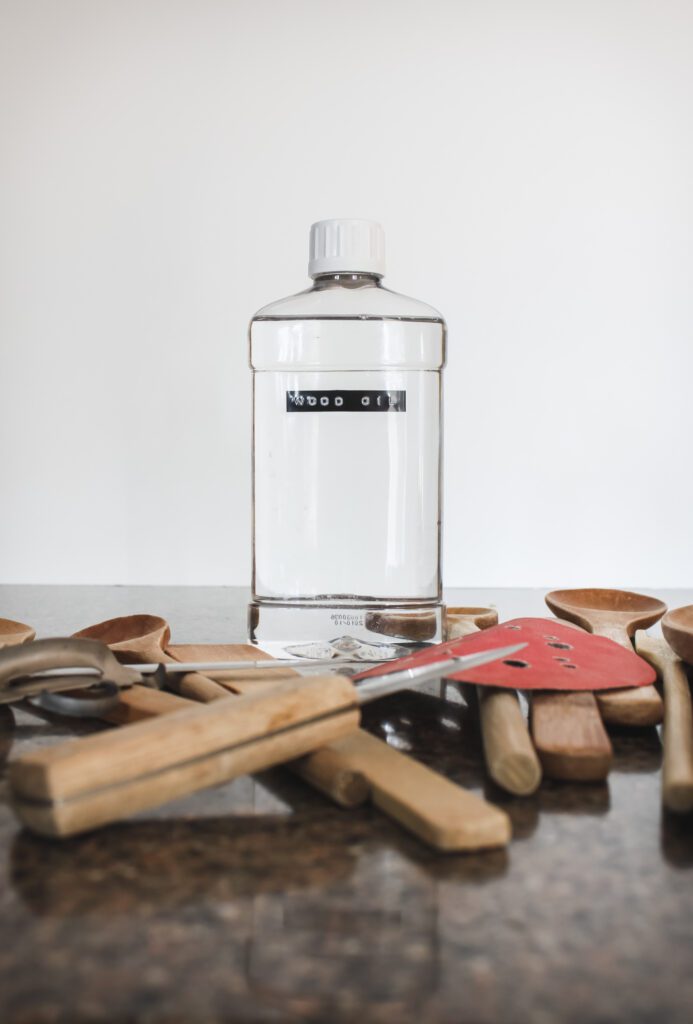
Also, make sure to avoid oils that go rancid like canola, vegetable, olive, and other plant-based oils. Nobody wants spoiled spoons!
How Often?
I don’t think there is a specific time that is perfect for re-oiling. Some say to do it every month, some say every 6 months. I’ve seen where one gal does it every 2 weeks! That feels super ambitious to me, slacker that I am. I think it’s really up to you and your spoons. If they are super dry and neglected, they’ll need more attention and love. From what I’ve read, once a quarter will probably get you by.
Every month is ideal but let’s be honest, that’s never going to happen. I’m lucky if I remember once a year… which explains the sorry state of my spoons. Yep. You saw the before pics. I struggle, but I’m determined to do better!
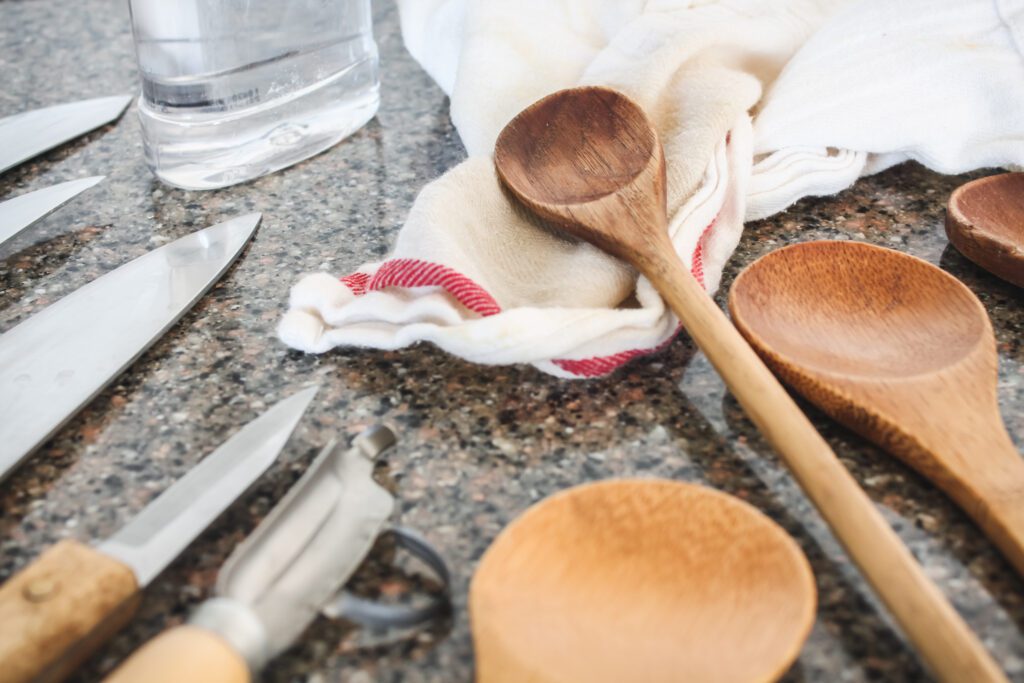
At least until I forget again.
Anyway, I hope this helps! For a deeper dive into caring for wooden cutting boards (which translates well to spoons, knives, bowls, and other utensils, check out THIS POST over on FOOD52. It’s really well put together and has some great info and photos.

Oh, and guess what I did after I oiled my wooden spoons? Wait for it… I sharpened my knives. Like actually took them to a real expert and had them professionally sharpened. I know, right? I mean, look at me all adulting like a full-blown grown-up!
If you have a wooden spoon, it probably needs a drink. Caring for wooden spoons, cutting boards, utensils, and all that handy kitchen stuff really is so easy and inexpensive.
Go show them a little love!
